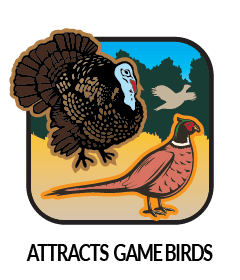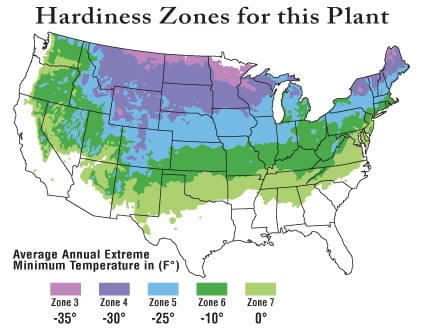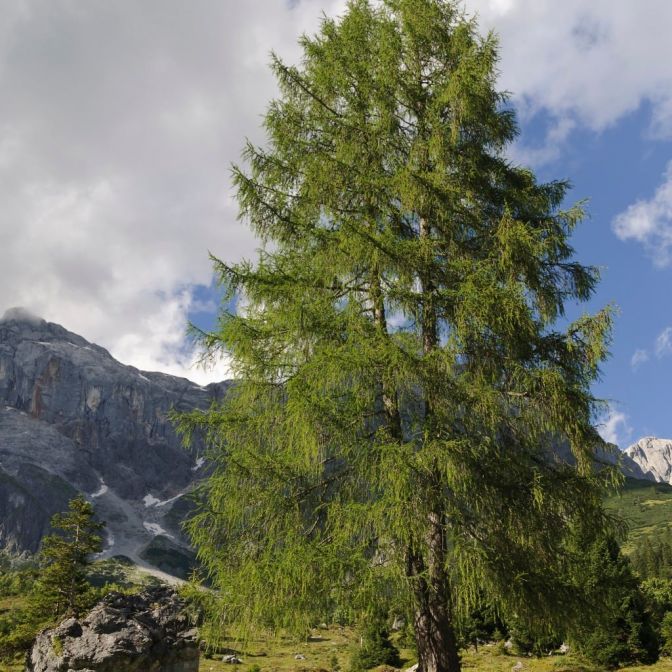European Larch
Plant Type: Dormant, bare-root
Zones: 3-7
Soil Type: Clay, Loamy & Sandy Soils
Site Selection: Full Sun, Partial Sun
Mature Height & Width: 60-70' Height and 20-30' Spread
Growth Rate: Moderate - 12-24" per year once established
Moisture Requirements: Average




European Larch
Larix decidua
The European Larch is a long-lived fast growing member of the Larch family. However, unlike most conifers which retain their color and needles year round, the green needles turn to a beautiful yellow orange in autumn. The needles of this deciduous conifer fall off at the end of autumn. In spring, soft new green growth emerges and the cycle starts over again. Consider an American Tamarack for wetter areas.
The European Larch is also known as the Common Larch.
The European Larch is a deciduous conifer whose needles turn a yellow/orange in fall and ultimately drop from the tree. The silhouette is interesting in form with large sweeping branches. In spring, new soft green foliage emerges and the entire process starts again. The European Larch may live up to 500 years or more. Perfect in upland areas. Suitable for low areas that dry out once in awhile.
Common uses for the European Larch:
- Specimen tree with unique foliage
- Fall color, needles turn yellow before dropping
- Naturalizing upland areas around wetlands
The European Larch has minimal wildlife value, however grouse will eat the foliage and the buds. The seeds are eaten by Red Crossbills, and the bark and seeds sometimes feed porcupines, squirrels and hares.





